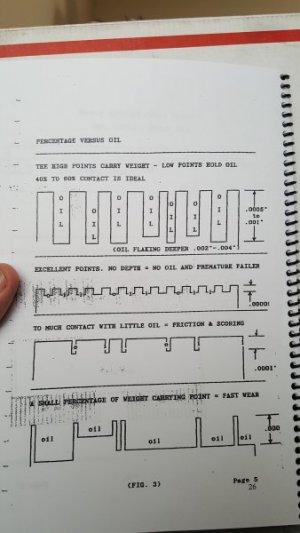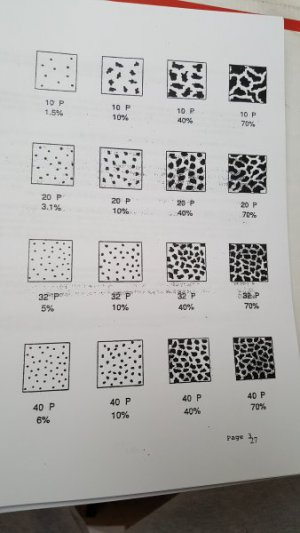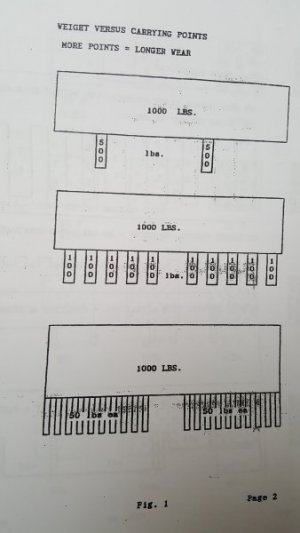- Joined
- Apr 21, 2015
- Messages
- 582
I'm not entirely sure how to get a higher bearing percentage, but I think the approach would be to have flatter/shallower scrapes. There are two ways to accomplish this: grind the blades with a larger radius, or lower the back end of the scraper to create a larger effective radius at the surface. Either way, I'd need to take a lot of care to keep the scrape depth consistent and not tip the blade (causing scratches).
Here's my thinking on this. If Rich or someone with more experience sees this, please correct me if I'm off base.
Each scrape you make removes a high point and makes a new low point (obviously). If your scraping is consistent (big if) all these new low points should be in roughly the same plane and will eventually become new high points in subsequent passes.
Since the scraper blade is radiused, each scrape mark has roughly the same profile as that an ice-cream-scoop leaves behind in a freshly opened tub of ice cream: it's deeper in the middle and higher on the sides (albeit at a microscopic level). A better analogy than a scoop would probably be a large coin.
The coin in ice cream analogy is pretty good, actually. If you were to furrow two trenches in the surface of some ice cream with a fifty-cent piece, once with the coin almost vertical, and once with the back end lowered almost to the surface, then the first trench would be deeper and with steeper sides. In addition to the shape of the trench from side to side, the depth also increases along the furrow as you plow. The longer the stroke, the deeper you go. The deepest part of the furrow is at the end of the stroke, where the material you've plowed is pushed into a steep steep hill with much of it pushed above the surface (an ice cream burr!).
I need to create some diagrams to accompany these thoughts, but I believe this is why you shorten your stroke and move to narrower, tighter radius blades as you move from roughing to finishing. While you still strive to maintain the same consistent pressure on your stroke, the shorter/tighter furrows allow the high points to get closer together as you create the cross hatch pattern with each pass of scraping. The depth of your furrows is reduced with shorter strokes, but this is counteracted by the tighter radius.
I know that if I lower the back end of my scraper slightly for the last few passes, the bottoms of the trenches formed will be flatter. I think that this is desirable if I want bigger points and a higher bearing percentage. If my reasoning is correct, the flatter bottoms will eventually become the high points (with the slightly raised sides removed by stoning). In other words, with steep sided, short, narrow furrows I'll never get large points. I'm not completely sure about this, though.
I may experiment with something much smaller than the surface plate when I have time.




